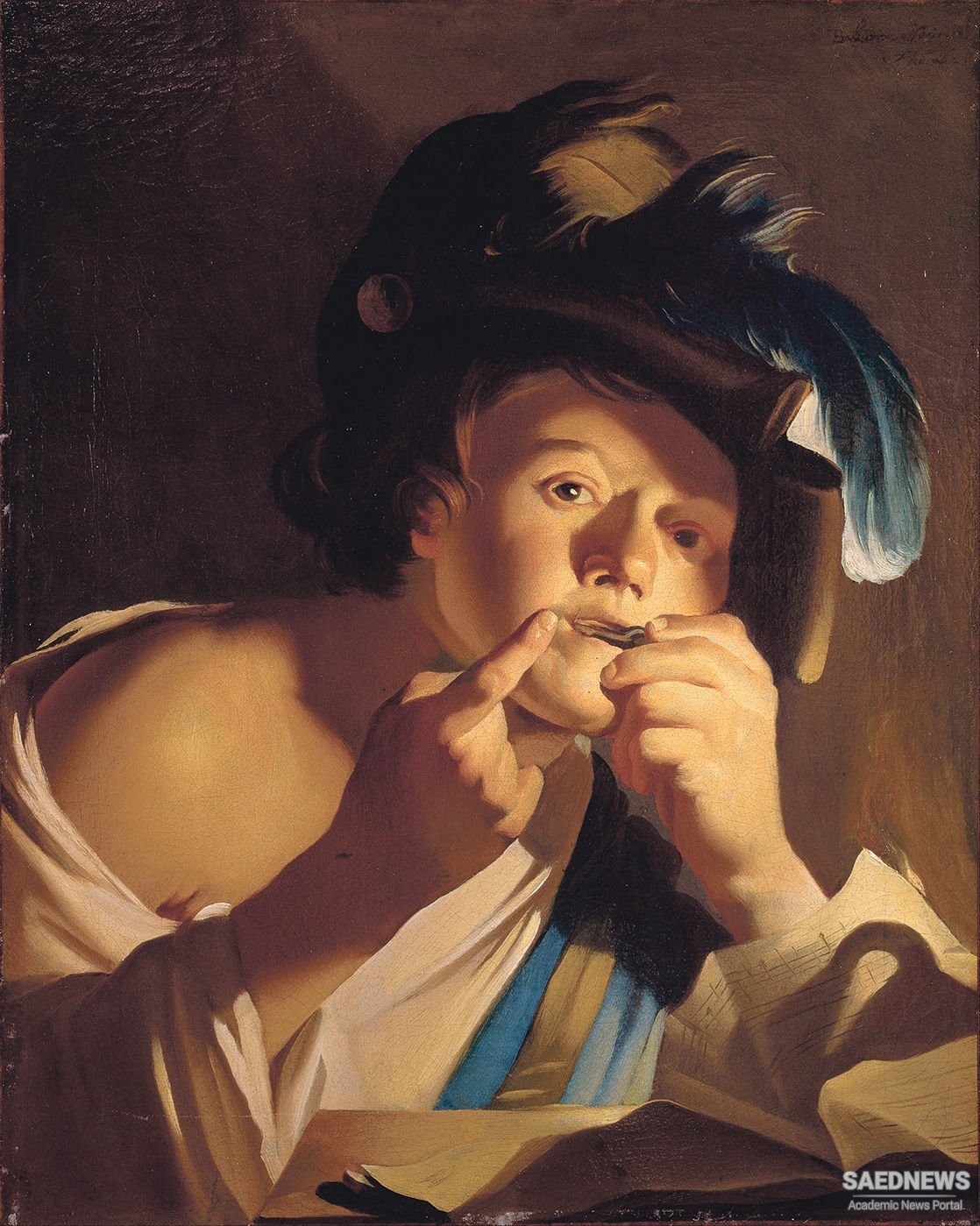The player’s jaws grasp the frame so that the lamella, plucked with a finger or a cord, vibrates between the teeth. The oral cavity, according to its position, amplifies one of the harmonics, just as it does when producing the various vowels of our language. Thus, little melodies can be obtained. Some observers attribute the tone and its pitch to the afflation of the lamella by the player’s breath; this, however, is incidental. All the same, breathing against the lamella may be connected with the origin of the jaws’ harp. In Hawaii and the Marquesas Islands a piece of bamboo is deeply notched at one end; a sliver of bamboo held over the notch vibrates when the singing voice is projected against it. Similar contrivances are used in Melanesia and in East Africa. Here is another instrument that starts as a voice mask.
The details of the slow evolution of the jaws’ harp are too unimportant for the scope of this book; the author described them at large in an earlier publication. It will suffice to give a short summary. The size decreased gradually; the lamella was at first formed by a strip cut out from the same piece of bamboo as the frame and still attached to one end (idio glottic jaws’ harp), and was later made from a separate piece of bamboo or metal and bound at one end to the frame (heteroglottic jaws’ harp); the oldest types had a thin cord at the end opposite the point of the tongue which set the lamella into vibration when it was pulled by jerks, while the most recent had a slender thorn instead. All these jaws’ harps apparently originated in Southeast Asia; the most interesting transitional types are still preserved in the islands of Formosa and Engano.
There we find intermediate stages between the ‘cut out’ and the modern ‘forged’ jaws’ harp, which latter consists of a flat steel tongue soldered to the vertex of a bent piece of wire, sometimes the shape of a hairpin, sometimes more resembling a horseshoe. This iron jaws’ harp has been made in two forms; in an older form, known throughout Asia and used in the European middle ages, the broad end of the tongue projected behind the frame; in a more recent form it does not. The great elasticity of the steel tongue produces a louder tone; some oriental people therefore consider the iron jaws’ harp too loud to foster the meditative state of mind required of so intimate an instrument.
What a contrast between this tiny jaws’ harp and the huge slit-drum; between the intimacy and meditation that it arouses and the terrifying sound of bull-roarers and trumpets; between its clear notes and the dull noise of rattles and pounding feet! And all these contrasting, indeed contradictory, impulses and principles have originated in the early stages of human evolution which, antedating town life, the formation of states and the invention of writing, are called primitive. More than ever we feel the necessity of establishing a chronology to bring order into this confusion.


 THE GROUND-ZITHER
THE GROUND-ZITHER














































